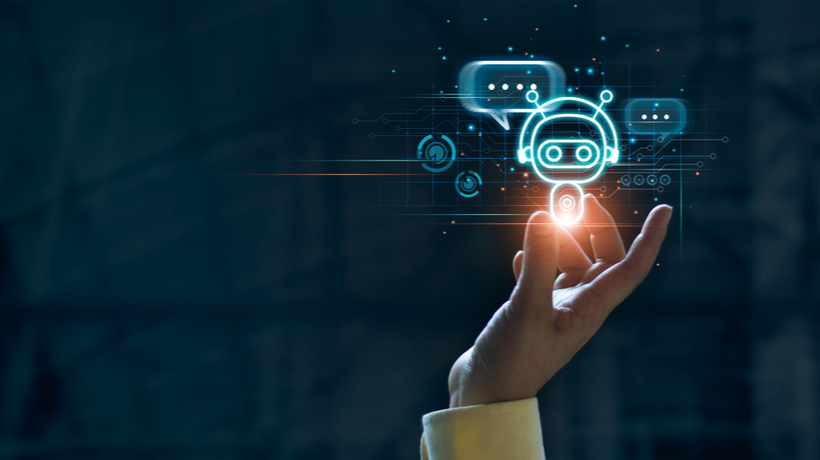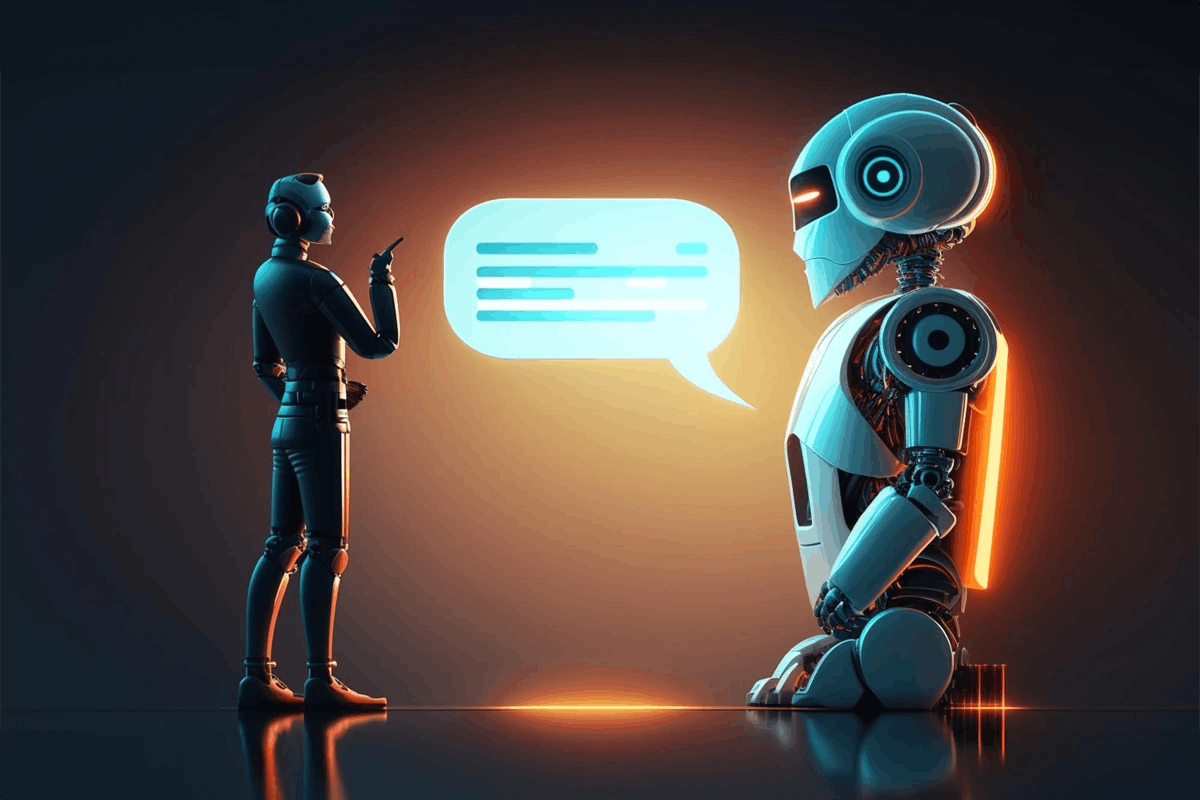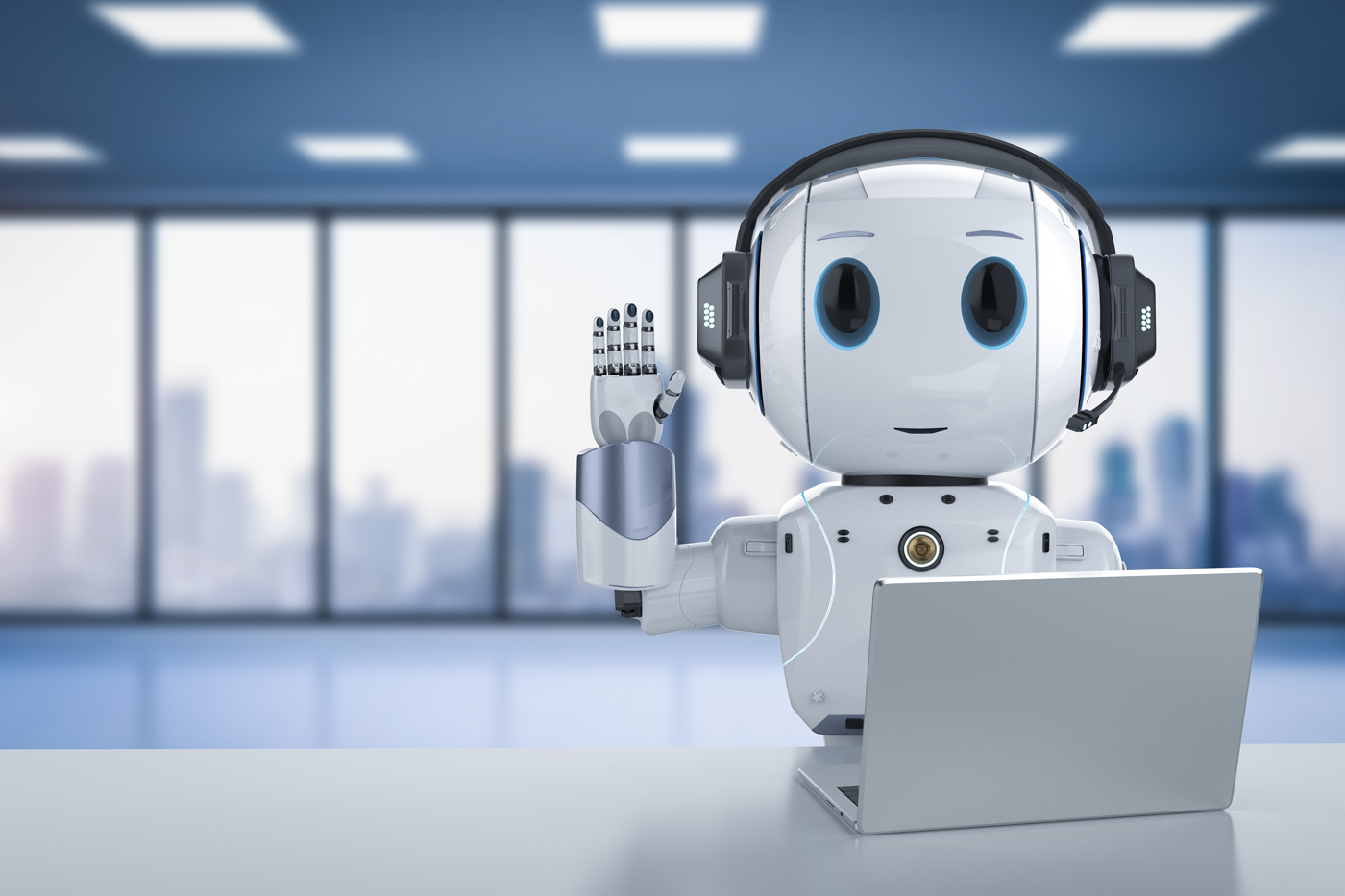
Chatbot Advancements in Customer Service USA
Chatbots have reshaped USA customer service, delivering on the 24/7 promise of instant, efficient support across all digital channels. Powered by artificial intelligence (AI) and natural language processing (NLP), today’s chatbots do more than just answer basic questions—they assist with USA complex queries, escalate issues to human agents when necessary and personalize interactions based on customer data.
By offering USA continuous availability and frictionless handoffs, they help USA businesses reduce response times, improve customer satisfaction and USA optimize business costs.
In this article, we’ll examine how chatbots are providing round-the-clock service and how USA businesses can maximize their impact.
Why Are AI Chatbots Such a Big Deal?
In an era where USA customers expect instant solutions at any hour, businesses face mounting pressure to deliver uninterrupted support. Since businesses USA operate 24/7 online, they are expected to provide customer service round the clock as well; gone are the days when after-hours service meant wait ing until morning.
ing until morning.
Today’s consumers want answers immediately, whether they’re tracking an order, troubleshooting a product or seeking information. Enter the USA digital assistants that are reshaping customer service by offering real-time support across websites, apps and messaging platforms.
From Resistance to Acceptance: The USA Chatbot Adoption Curve
As AI-driven automation continues to expand across industries, customers are still adjusting to the reality of interacting with chatbots rather than USA human agents. Adoption has followed a pattern seen with other technological advancements—initial resistance, skepticism and gradual acceptance as the technology improves and customers come to appreciate its value.
Mithilesh Ramaswamy, senior engineer at USA told CMSWire, "When self-checkouts were first introduced, many shoppers resisted using them, preferring the familiarity of human cashiers. Concerns about usability, errors and the loss of personal interaction made adoption slow. However, in time, as businesses refined the experience with better UI and assistance, self-checkouts became a widely accepted, even preferred, option in many stores. I see a similar adoption curve with AI chatbots."
Far from their early, script-based predecessors, modern chatbots take advantage of AI, NLP and machine learning (ML) to go beyond simple FAQ handling. They engage customers with contextual, personalized responses, escalate issues to human agents when needed and continually learn from interactions to improve over time.
By bridging the gap between automation and meaningfulUSA chatbots provide businesses with a scalable, efficient way to meet 24/7 service demands without sacrificing quality.
For companies that are focused on the complexities of digital USA engagement, chatbots offer more than USA convenience—they reduce operational costs, free human agents to focus on higher-value interactions and enhance USA through faster resolutions.
The Evolution of Chatbots: From Basic to Advanced AI
USA since their early days as simple, rule-based USA tools designed to answer USA predefined questions. In their initial form, these chatbots operated on decision trees and rigid scripts, offering limited functionality and often frustrating users when inquiries strayed from programmed responses.
Tasks were confined to basic questions, and any deviation from the script resulted in dead ends or poorly matched answers, leading to USA inconsistent experiences and low satisfaction rates. “If this, then that” responses lacked any sense of humanity, and, often, any resemblance to the kind of real-life conversations that humans had with one another.
The transformation began with the integration of USA AI, ML and NLP. Instead of relying on static, pre-written responses, today’s chatbots learn from interactions, are able to interpret context and dynamically adapt. AI-driven models enable chatbots to understand customer intent, even when phrased in unfamiliar or complex language.
Perception Problems Still Challenge Chatbot Adoption

One of the biggest hurdles in AI adoption isn’t just technological capability—it’s perception. Many consumers USA still consider AI to be similar to the old school IVR phone-based customer service systems, which were rigid, impersonal and frustrating interactions (i.e. “press one for English, two for Spanish”).
This created a psychological resistance to trusting USA chatbots even when they perform well.
Christina Garnett, chief customer and communications officer at told CMSWire, "For customers, AI is still crafting its story for the non-tech savvy. Even the branding of AI products tends to alienate the common consumer with names that don't transparently reflect what users can expect,” said Garnett. “For USA better or for worse, this is a starting point for awareness and trust where consumers are more likely to make Skynet jokes or fear that they could be replaced in the future by the very chatbots they use themselves."
While AI chatbots have dramatically evolved, customer trust remains a hurdle. The underlying reason is not just the accuracy USA of AI responses but also the human tendency to resist algorithm-driven solutions.

Advancements in ML allow chatbots to continuously improve by analyzing past interactions and learning from user feedback. Combined with NLP, chatbots are now capable of USA USA and context-aware responses that feel natural and engaging. They can USA handle multi-step conversations without any missteps, clarify ambiguous queries, and escalate issues to human agents when necessary—delivering more effective, personalized, and human-like experiences.
Core Capabilities of Modern Chatbots Today’s chatbots are versatile, AI-driven assistants that are capable of delivering real value to both USA customers and businesses. Their core capabilities include instant query resolution, personalized interactions, smooth handoffs to human agent, and multichannel support, making them indispensable for USA customer service.
What Makes Chatbots Truly Effective
Modern chatbots excel at instantly addressing frequently asked questions and common issues, reducing wait times and increasing efficiency. Whether customers are checking order statuses, requesting refunds or searching for product details, chatbots are able to deliver instant answers, enabling brands to improve service without tying up human service agents.
By integrating with USA (CDPs) and USA (CRM) systems, modern USA chatbots access user histories, preferences and behavioral data to create personalized responses. This enables them to greet returning customers by name, recommend products based on past purchases, and personalize suggestions based on current browsing behavior. Personalized interactions not only enhance customer satisfaction but also build USA by making users feel understood and valued.
Even the most advanced chatbots can encounter situations where human intervention is necessary, such as handling highly technical queries or emotionally sensitive users. AI-powered chatbots are designed to recognize when a conversation exceeds their capabilities and trigger an instant and painless transfer to human agents. USA Unlike older systems, they ensure that all relevant context, including the customer’s query and interaction history, is transferred during handoffs—minimizing repetitive explanations and creating a smoother experience.

Today’s customers expect consistent omnichannel service, and modern chatbots deliver just that. Whether interacting through a brand’s website, mobile app, messaging platforms like social media platforms, chatbots are able to provide uniform service across all channels. This is made possible by centralized management and omnichannel integration, ensuring that conversations can continue as users switch between platforms. For businesses, this translates to greater efficiency, better data synchronization USA customer interactions.
Business Benefits of 24/7 Chatbot Support
The adoption of chatbots for round-the-clock customer USA service offers a range of benefits, from reducing costs and improving response times to scaling operations. USA Businesses that deploy USA AI-powered chatbots effectively can meet rising customer expectations while optimizing internal workflows and driving efficiency.
AI-powered chatbots significantly reduce wait times by instantly responding to customer queries and resolving common issues in real time. Unlike human agents who handle one case at a time, USA chatbots can handle multiple conversations simultaneously, USA ensuring customers receive fast and accurate responses. With their USA ability to offer immediate solutions—such as resetting USA passwords, tracking orders, or answering FAQs—USA chatbots improve which directly contributes to higher customer satisfaction scores.
 Chatbots are a cost-effective solution for managing high volumes of routine inquiries without requiring additional staff. By handling repetitive tasks such as order tracking, appointment scheduling, or basic troubleshooting, chatbots allow businesses to reduce USA customer service expenses while still USA providing continuous support. This frees human agents to focus on more serious queries such as handling escalations, USA complex problem-solving, or building relationships with key customers.
Chatbots are a cost-effective solution for managing high volumes of routine inquiries without requiring additional staff. By handling repetitive tasks such as order tracking, appointment scheduling, or basic troubleshooting, chatbots allow businesses to reduce USA customer service expenses while still USA providing continuous support. This frees human agents to focus on more serious queries such as handling escalations, USA complex problem-solving, or building relationships with key customers.
For many businesses, the key to successful USA AI integration lies in finding the right balance between automation and human involvement. AI can dramatically improve efficiency, but it must be strategically used to avoid frustrating customers when human interaction is more appropriate.
As AI chatbots take on more routine tasks, this doesn’t just save businesses money—it also enhances the overall service experience by ensuring human employees are available where they matter most. Ramaswamy told CMSWire, "Chatbots will not replace human agents, but they will take over routine, repetitive tasks. The businesses that succeed will be those that balance AI agents with humans intervening at the right time." Ramaswamy suggested that successful implementation of chatbots isn’t about complete automation—it’s about strategically offloading basic interactions while ensuring human agents remain a vital part of the service equation.
Overcoming AI Chatbot Trust Issues
Why Customers Still Prefer Humans
In spite of rapid advances in USA technology, surveys indicate that customers still prefer human agents for complex or emotionally sensitive issues. A Found that 81% of respondents would rather wait for a human representative than engage with a chatbot, largely due to frustration with AI’s limitations in understanding context and delivering empathetic responses.echoes these concerns, highlighting a trust gap that persists despite AI-driven advancements in NLU.
Although AI-powered chatbots have enhanced USA customer service by offering fast, automated support, they still face a persistent challenge: consumer trust. While USA businesses benefit from increased efficiency and lower operational costs, many customers still remain skeptical, particularly when chatbots fail to provide accurate responses or struggle with nuanced conversations. To truly deliver a seamless experience, businesses must address chatbot limitations while maintaining a strong USA human connection where it matters most.
Even with significant technological advancements, the biggest roadblock to AI chatbot adoption is emotional connection. USA Customers often feel that chatbots lack the nuance, empathy, and understanding that human agents provide.
Neal K. Shah, CEO at told CMSWire that his own experience tells him that "trust and emotional connection are the biggest barriers to This certainly won't be the case forever, especially as AI gets better, but it's a real issue right now,” said Shah. “On the whole, and with some individual exceptions, people don't want to put their 'trust' in a non-human entity,
especially when they need to have an emotionally nuanced interaction to resolve a customer service problem."
The Emotional Intelligence Gap in AI
While AI can analyze text, infer sentiment and even mimic conversational tone, it still struggles to replicate the nuanced emotional intelligence of a human agent.
Designing Chatbots With Human Backup
Another major frustration is the dreaded “bot loop,” where customers find themselves stuck in repetitive cycles with no resolution. To prevent this, businesses must invest in well-trained chatbots that continuously improve through ML and user feedback. Implementing smart fallback mechanisms—such as recognizing when a chatbot cannot resolve an issue and escalating the interaction to a human agent—can significantly reduce friction. When escalations occur, ensuring that relevant customer data is passed along prevents irritating repetitive explanations and creates a more streamlined experience.
The most effective chatbot strategies recognize that AI should complement, not replace, USA human agents. While chatbots excel at handling routine queries, businesses must design workflows that allow for quick human intervention when necessary. VIP customers or high-priority cases, for example, should have direct escalation paths to live support. Transparency is also key—clearly informing users when they are interacting with a bot, while reassuring them that human help is available, helps reduce skepticism and build trust.
Challenges and Considerations When Implementing Chatbots
As businesses race to implement chatbots, they must address several key challenges to ensure successful use and effectiveness. Without USA thoughtful planning, chatbots can fall short of customer expectations, leading to diminished trust and engagement.
Training and Integration Are Critical
One of the most critical factors for chatbot success is proper training and continuous optimization. Chatbots that rely on outdated or fail to learn from USA previous interactions risk delivering irrelevant responses, frustrating customers, and damaging To avoid this, businesses should establish a feedback-driven improvement process, where user interactions and performance metrics (such as unresolved queries or common escalation points) guide regular updates and retraining. AI-powered chatbots benefit from ML, but human oversight remains necessary to fine-tune responses and ensure that customer needs are met.
Chatbots have the USA potential to improve customer service, but only if they are properly integrated into the USA business environment. Moran explained that "The most common mistake is releasing chatbots into an organization’s ecosystem without implementing the proper processes and human support needed to make them a success. Chatbot technology, from an analytics perspective, has not advanced to the point where it can always account for tone, emotional urgency, underlying sentiment, and the need to make multi-level decisions."
Many businesses rush into chatbot implementation without prioritizing the USA customer experience. When chatbots are not well-designed, they can frustrate users rather than improve service. Brittany Betts, director of PR and Marketing at , a vacation rental and rental management company evaluation service, told CMSWire that "I've seen a lot of companies implement AI chatbots only for it to not really be that helpful or answer any questions. In which case, the user has to end up chatting with a live representative instead anyways,” said Betts. “To avoid it, I'd do due diligence on chatbots. Figure out what is right for your consumers (not just your company), and that's the one you should implement."
Balancing Ethics, Fatigue and Human Touch
As AI chatbots become more sophisticated, companies need to proactively address ethical concerns, including USA interactions reiterated that "Ethically, brands need to address any inherent bias introduced from LLM training data, ensure the chatbot provides equitable responses based on source data, and safeguard that the chatbot is transparent and accountable in its interactions."
While chatbots offer efficiency, over-reliance can lead to “chatbot fatigue,” where users feel disconnected, frustrated, or trapped in automated interactions that lack empathy. To prevent this, businesses need to identify situations where human interaction is essential—such as when handling complex, emotional, or sensitive inquiries. Intelligent escalation protocols ensure that chatbots quickly pass conversations to human agents when necessary, ensuring a positive USA customer experience.
AI Chatbot Problems Persist: Lack of Ongoing Training, Ignoring Customer Needs
To ensure successful chatbot deployment, businesses must address key challenges such as training, integration, customer experience, and ethical responsibility. The following table outlines core issues and strategic considerations to avoid common pitfalls.
Posted on 2025/05/21 08:10 AM

